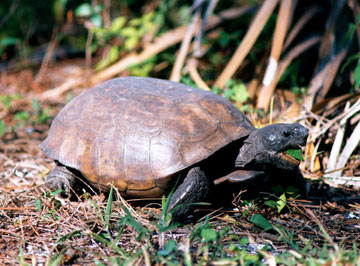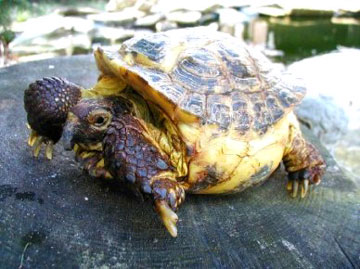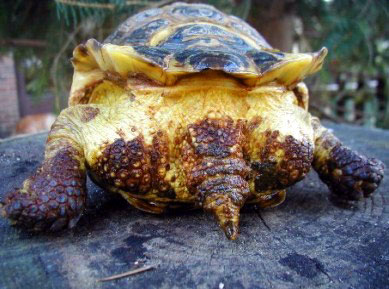

A wild Gopherus polyphemus (Florida gopher tortoise) browses upon leaves and flowers in its natural habitat: providing adequate diets in captivity is a challenge for keepers, but it can be done.
Q. The reptile expert at the pet store says that all that a tortoise really needs is a vivarium and a diet of lettuce and fruit. Your site does not agree with this. Who should I believe?
A. It is very difficult for beginners when they receive such conflicting advice. Before we show you the actual effects of the method your pet store 'expert' is recommending, we would point out that pet stores are interested in making a sale. They also want to sell you expensive vivarium equipment in addition to the animal. We are not trying to sell you anything - we are merely trying to prevent your animal suffering as a result of incorrect advice. Our advice is free. We strongly recommend that if you are unsure, join the Tortoise Trust e-mail list. There are more than 1,000 keepers on that list from all over the world who can give you totally impartial help and advice. That said, this is what will happen to your tortoise on the diet this 'expert' is suggesting:


Russian tortoise (Testudo horsfieldii) raised in a vivarium tank and fed on lettuce and fruit. There is severe reduction and deformity of the carapace, typical of a diet that was grossly deficient in calcium and/or vitamin D3. The beak is also severely overgrown. Fishtank-type vivaria are NOT appropriate environments for terrestrial tortoises (see 'A Habitat for Horsfields' elsewhere on this website). Many thanks to tortoise rescuer Marty La Prees for donating this photograph. The tortoise is now in a suitable environment on a proper diet. Unfortunately, the deformity can never be reversed.